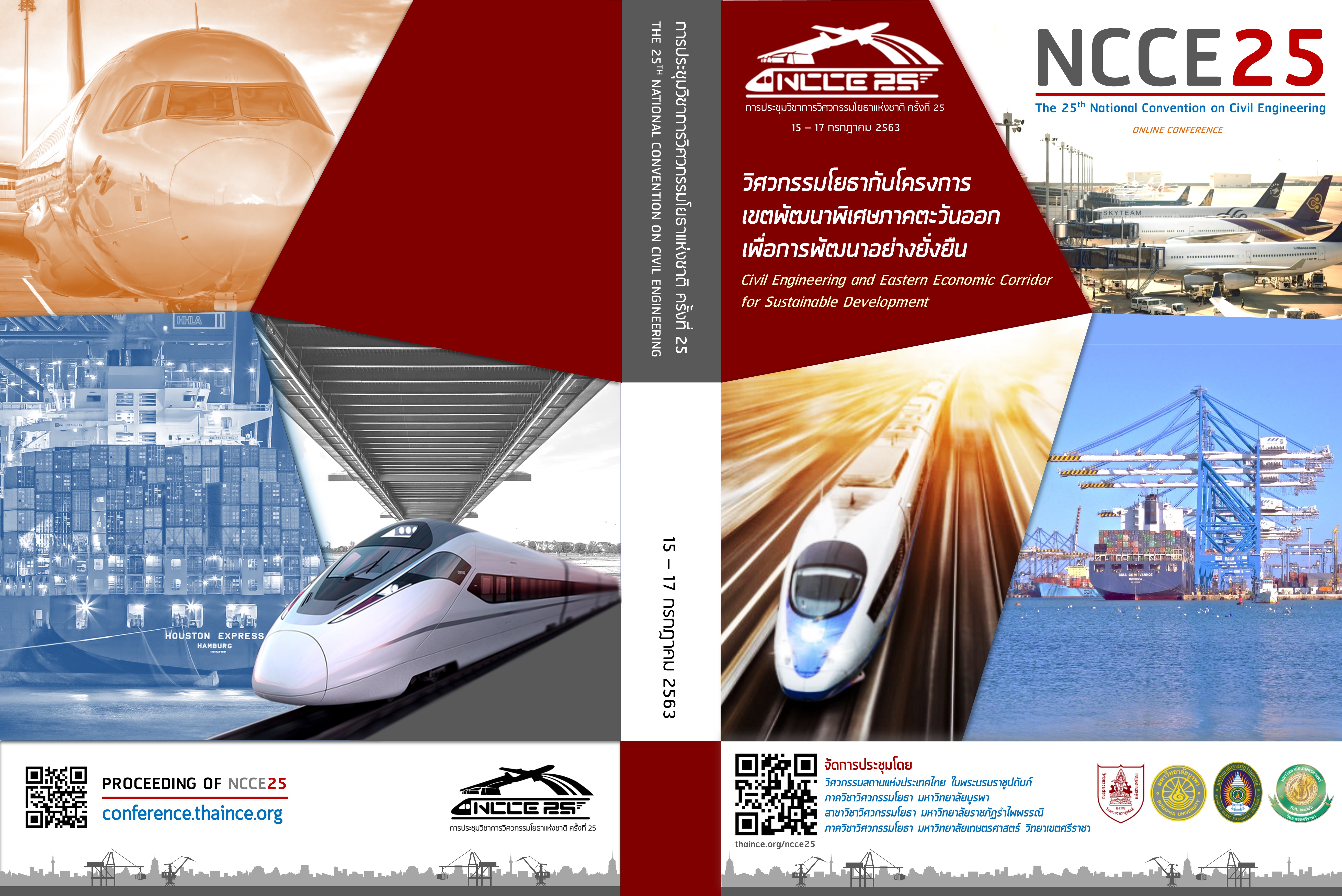การวิเคราะห์การเปลี่ยนแปลงอุณหภูมิของประเทศไทยในรอบ 10 ปี
คำสำคัญ:
ภัยแล้ง, การติดตามภัยแล้ง, ค่าผิดปกติอุณหภูมิบทคัดย่อ
งานวิจัยนี้ได้แสดงการประมวลผลข้อมูลอุณหภูมิพื้นผิวของประเทศไทยต่อเนื่องตั้งแต่ปี 2556 ถึงปี 2563 จากข้อมูลความร้อนพื้นผิว (land surface temperature) ข้อมูลจากเซนเซอร์ติดตั้งบนดาวเทียมระบบ VIIRS (Suomi NPP) ความละเอียดเชิงพื้นที่ 1 ตารางกิโลเมตร แสดงการเปลี่ยนแปลงอุณหภูมิรายพื้นที่ และแสดงการประมวลผลเส้นฐานอุณหภูมิ (baseline temperature) สำหรับใช้ประมวลผลค่าผิดปกติ (anormaly) ของอุณหภูมิพื้นผิวรายสัปดาห์ต่อเนื่องในปีที่ประเทศไทยประสบภัยแล้งรุนแรงที่สุดในรอบ 20 ปี เมื่อปี 2562 และยังได้แสดงค่าผิดปกติของอุณหภูมิรายสัปดาห์ต่อเนื่องในปี 2563 การประมวลผลทุกขั้นตอนในการคำนวณข้อมูลเส้นฐานอุณหภูมิ จากการศึกษาพบว่าในปี พ.ศ. 2563 โดยภาพรวมมีค่าค่าผิดปกติอุณหภูมิสูงกว่าปี พ.ศ.2562 เฉลี่ย +0.302 องศาเซลเซียส ซึ่งปีพ.ศ.2563 มีแนวโน้มการเกิดภาวะภัยแล้งรุนแรงกว่าปีก่อน ตลอดจนค่าผิดปกติรายสัปดาห์จากงานวิจัยนี้ ได้ถูกนำมาใช้พัฒนาเครื่องมือสำหรับเผยแพร่ให้นักวิจัยการสำรวจระยะไกลของประเทศไทย ได้นำไปประยุกต์ใช้ประมวลผลข้อมูลจากระบบให้บริการข้อมูลพื้นผิวอัตโนมัติของสำนักงานพัฒนาเทคโนโลยีอวกาศและภูมิสารสนเทศ (องค์การมหาชน) เพื่อให้เกิดองค์ความรู้ในการติดตามแก้ไขปัญหาภัยแล้งได้อย่างมีประสิทธิภาพมากขึ้นในอนาคต
Downloads
เอกสารอ้างอิง
[2] Carter, T.R., Hulme, M. and Lal, M., 1999. Guidelines on the use of scenario data for climate impact and adaptation assessment.
[3] Mann, M. E., & Gleick, P. H. (2015). Climate change and California drought in the 21st century. Proceedings of the National Academy of Sciences, 112(13), 3858-3859.
[4] National Oceanic and Atmospheric Administration. (n.d.). Anomalies vs. Temperature. [online] Available from: https://www.ncdc.noaa.gov/monitoring-references / dyk / anomalies-vs-temperature [accessed 3 May 2020].
[5] University of Washington. (n.d.). Case 2: The Role of Anomalies in Climate Science. [online] Available from: https://www.stat.washington.edu/peter/statclim/Case%202.html [accessed 3 May 2020].
[6] ธกรกฤต จันไชยยศ, สรวิศ สุภเวชย์ และ กาญจน์เขจร ชูชีพ. (2561). การพัฒนาอัลกอริทึมประมาณการใช้น้ำในนาข้าวรายวันด้วยข้อมูลเซนเซอร์จากดาวเทียม Suomi NPP VIIRS. วารสารสมาคมสำรวจข้อมูลระยะไกลและสารสนเทศภูมิศาสตร์แห่งประเทศไทย, ปีที่ 19, ฉบับพิเศษ, หน้า 132-145.
[7] พบพร จงชาญสิทธิโธ. (2563). จับตาผลกระทบภัยแล้งต่อเศรษฐกิจไทยปี2563. [ออนไลน์]. ได้จาก: https://www.gsbresearch.or.th/ [สืบค้นเมื่อ 3 พฤษภาคม 2563]
[8] สำนักงานเศรษฐกิจการเกษตร. (2562). สศก. แนะปลูกพืชอายุสั้น ใช้น้ำน้อย ทดแทนนาปรัง แก้ปัญหาขาดแคลนน้ำในฤดูแล้ง. [ออนไลน์].ได้จาก : http://www.oae.go.th/ [สืบค้นเมื่อ 3 พฤษภาคม 2563]
ดาวน์โหลด
เผยแพร่แล้ว
วิธีการอ้างอิง
ฉบับ
บท
การอนุญาต
บทความทั้งหมดที่ได้รับการคัดเลือกให้นำเสนอผลงานในการประชุมวิชาการวิศวกรรมโยธาแห่งชาติ ครั้งที่ 25 นี้ เป็นลิขสิทธิ์ของ วิศวกรรมสถานแห่งประเทศไทย ในพระบรมราชูปถัมภ์



